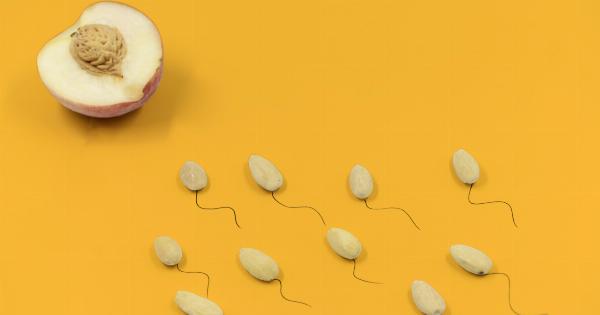When it comes to fertility and reproductive health, temperature plays a crucial role, especially for sperm.
Sperm cells are extremely sensitive to temperature changes, and even a slight increase or decrease in temperature can significantly impact their quality and motility. In this article, we will explore the effects of temperature on sperm and answer the question, “What temperature kills sperm?”.
The Optimal Temperature for Sperm
Before we delve into the temperature range that can be detrimental to sperm, it’s essential to understand the optimal temperature required for their survival.
The human body maintains a carefully regulated internal temperature of around 98.6°F (37°C), which is also the ideal temperature for sperm production and function.
Inside the male reproductive system, the testes are situated outside the body cavity in a sac-like structure called the scrotum. This positioning helps keep the testes slightly cooler than the rest of the body, allowing for optimal sperm development.
The temperature in the scrotum is typically a few degrees lower than the body’s core temperature, ranging from 94°F to 96°F (34°C to 36°C).
Temperature and Sperm Production
Research has shown that even small variations in scrotal temperature can affect sperm production. When the temperature rises above the optimal range, testicular function can be compromised, leading to decreased sperm count and motility.
Exposure to high temperatures, whether through environmental factors or lifestyle choices, can negatively affect spermatogenesis, which is the process of sperm cell production.
Extended exposure to heat sources such as saunas, hot tubs, or even frequently using laptops on the lap, can raise scrotal temperature and hinder the production of healthy sperm.
The Impact of High Temperatures on Sperm
High temperatures can have various detrimental effects on sperm, including:.
1. Decreased Sperm Count:
When exposed to excessive heat, the cells responsible for sperm production, known as Sertoli cells, may become damaged. This can lead to a decrease in sperm count, making it more challenging to achieve pregnancy.
2. Reduced Sperm Motility:
Heat can impair sperm motility, which is the ability of sperm cells to swim and navigate the female reproductive tract. Motility is crucial for the sperm to reach the egg and fertilize it.
An increase in temperature can cause the sperm to move slower or lose their ability to swim altogether.
3. Morphological Abnormalities:
Prolonged exposure to high temperatures can cause structural deformities in sperm cells, impacting their shape and overall morphology. These abnormalities can further hinder their ability to fertilize an egg successfully.
4. DNA Damage:
Heat stress can lead to oxidative stress within the testes, resulting in DNA damage in sperm cells. Damaged DNA can impede the chances of a successful pregnancy, increase the risk of genetic abnormalities in offspring, or even lead to miscarriages.
The Effects of Low Temperatures on Sperm
While high temperatures can be detrimental to sperm, extremely low temperatures can also pose risks. Cold temperatures can cause sperm to become dormant, lose motility, and potentially lead to cell death.
However, unlike high temperatures, the effects of low temperatures are usually reversible once the sperm is exposed to warmer conditions.
It’s important to note that freezing sperm at ultra-low temperatures (-196°C) in specialized laboratories can effectively preserve sperm for an extended period, as in the case of sperm banking or assisted reproductive technologies like in vitro fertilization (IVF).
What Temperature Kills Sperm?
The temperature at which sperm cells begin to die varies depending on the duration of exposure. Generally, temperatures slightly above the body’s core temperature can start to impair sperm function.
However, it’s important to understand that sperm cells are highly sensitive and can be damaged even at slightly elevated or reduced temperatures.
A study published in the journal Human Reproduction Update concluded that sustained increases in scrotal temperature above 98.6°F (37°C) can significantly decrease sperm quality and affect fertility.
Prolonged exposure to temperatures above 104°F (40°C) can even lead to irreversible damage and cell death.
Protecting Sperm from Temperature-Related Damage
If you are trying to conceive or wish to preserve your reproductive health, it is important to take measures to protect sperm from temperature-related damage. Here are a few tips:.
1. Avoid Excessive Heat Exposure:
Avoid prolonged exposure to high temperatures, such as hot baths, saunas, hot tubs, or Jacuzzis. If you work in an environment that exposes you to high temperatures, take regular breaks and ensure adequate cooling measures are in place.
2. Opt for Loose-Fitting Clothing:
Tight-fitting underwear and pants can increase scrotal temperature. Opt for loose-fitting clothing made of breathable fabrics like cotton to allow better air circulation and maintain lower temperatures.
3. Limit Exposure to Heat Sources:
Avoid placing laptops directly on your lap for extended periods, as the heat generated can raise scrotal temperature. Opt for a laptop cooling pad or work on a desk or table instead.
4. Be Mindful of Testicular Location:
Avoid activities that cause excessive pressure or trauma to the testicles, as this can also increase scrotal temperature.
Conclusion
Temperature plays a crucial role in sperm health and fertility.
While the ideal temperature for sperm survival is around 98.6°F (37°C), sustained exposure to temperatures above this range can lead to significant damage, reduced sperm quality, and impaired fertility. Similarly, extremely cold temperatures can temporarily impair sperm function, but the effects are usually reversible.
Protecting sperm from excessive heat exposure and keeping scrotal temperature within the optimal range is essential for maintaining healthy reproductive function and increasing the chances of successful conception.






























